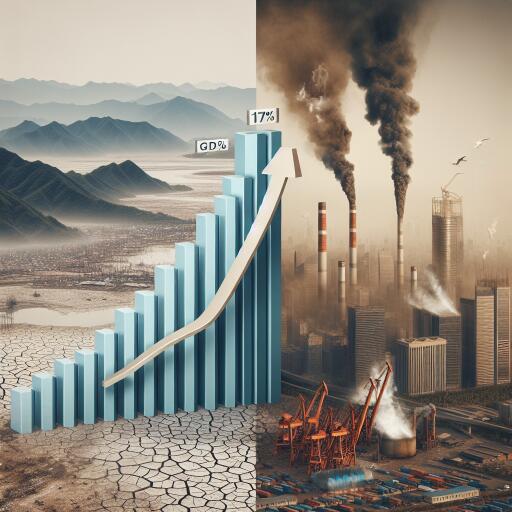
Inaction on emissions could cut developing Asia’s GDP by 17% by 2070, ADB says
The potential for developing Asia to see its collective gross domestic product (GDP) slashed by 17% by the year 2070 stands as a stark warning. If high emissions continue unchecked, this dramatic economic downturn could become reality, as emphasized by the Asian Development Bank (ADB) in its recent climate report. This projection highlights the urgent need for stronger, more ambitious climate actions in the region.
Despite some progress in reducing emissions, current efforts are insufficient to align with global goals. The ADB’s inaugural climate report underscores that current policies might drive global temperatures to rise by approximately 3 degrees Celsius within this century. This rise is double the 1.5-degree cap agreed upon by global governments to avert severe consequences.
The region encompassing 46 Asia-Pacific countries—ranging from Georgia to Samoa, but excluding Japan, Australia, and New Zealand—faces increasing climate threats. The impact of climate change is exacerbating the devastation caused by tropical storms, heatwaves, and floods, posing unprecedented challenges to economies and human livelihoods across this vast area.
Progress in cutting emissions intensity has been notable, with a 50% reduction in developing Asia since the year 2000; however, the region still accounts for nearly half of the world’s greenhouse gas emissions. Increases in production, energy demand, and domestic consumption have propelled emission growth over the past two decades, with China responsible for two-thirds of this rise. Meanwhile, South Asia and Southeast Asia contributed 19.3% and 15.4%, respectively.
The energy sector holds the position of the region’s most significant emitter, generating 77.6% of total emissions, largely due to an entrenched dependence on fossil fuels. If these trends persist without intervention, developing Asia could find itself at the forefront of both the impacts of global warming and the quest for solutions.
The fleeting opportunity to restrict warming to the 1.5 degrees Celsius target set by the Paris Agreement is quickly diminishing. The ADB encourages nations to devise more ambitious and large-scale action plans for mitigation, expedite the transition to net-zero emissions, and boost investments in advanced climate technologies along with nature-based solutions.
If the acceleration of the climate crisis continues, the threats of coastal flooding could place up to 300 million people in this region at risk. Furthermore, annual damages measured in trillions could afflict coastal assets by 2070. The imperative for urgent, well-organized climate efforts to address these looming impacts cannot be overstated, as any delay could usher in irreversible consequences.





Leave a Reply